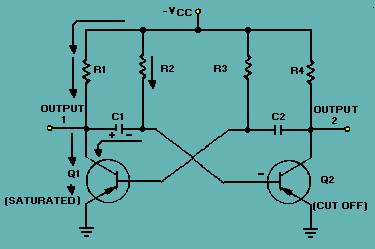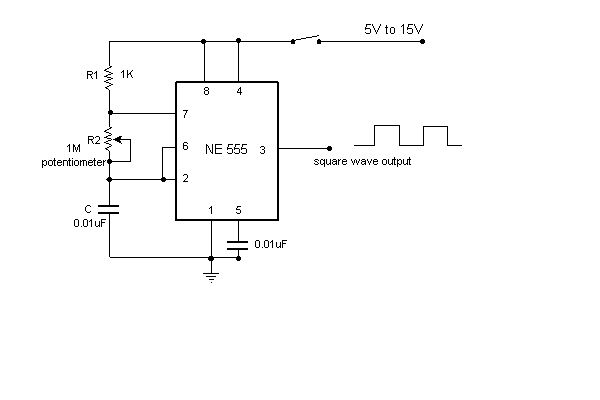
Astable Multivibrator

No description available.
Related Circuits

This circuit is a bistable multivibrator, commonly known as a flip-flop. Activating the "set" input located at the lower left corner will raise the output to a high state (5V). Conversely, engaging the "reset" input at the lower right...

The circuit utilizes a CMOS dual D flip-flop (CD4013) to toggle a relay or other load using a momentary push button. Multiple push buttons can be connected in parallel to control the relay from different locations. A high signal...

This is a very simple circuit utilizing a 555 timer IC to generate a square wave of frequency that can be adjusted by a potentiometer. With values given, the frequency can be adjusted from a few Hz to several...

This is a monostable multivibrator circuit that utilizes a single operational amplifier. The primary component of this circuit is the 741, a general-purpose operational amplifier. A monostable multivibrator is a timing circuit that changes its output state when triggered...

Two gates of the Quad 4093 are utilized to create an oscillator. The resistor (R) can range from approximately 5 kΩ to around 10 kΩ. The capacitor (Cx) can vary from about 10 pF to higher values, with the...

A monostable multivibrator (MMV), commonly referred to as a one-shot multivibrator, is a pulse generator circuit where the pulse duration is determined by an externally connected resistor-capacitor (R-C) network to a 555 timer. In this configuration, one output state...
Warning: include(partials/cookie-banner.php): Failed to open stream: Permission denied in /var/www/html/nextgr/view-circuit.php on line 713
Warning: include(): Failed opening 'partials/cookie-banner.php' for inclusion (include_path='.:/usr/share/php') in /var/www/html/nextgr/view-circuit.php on line 713